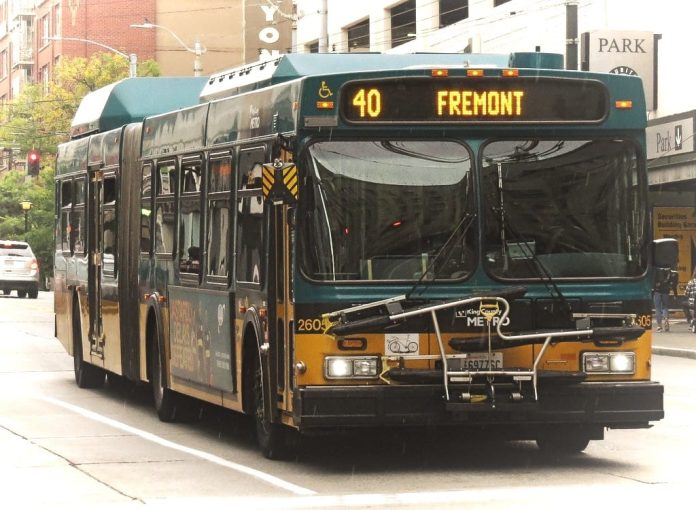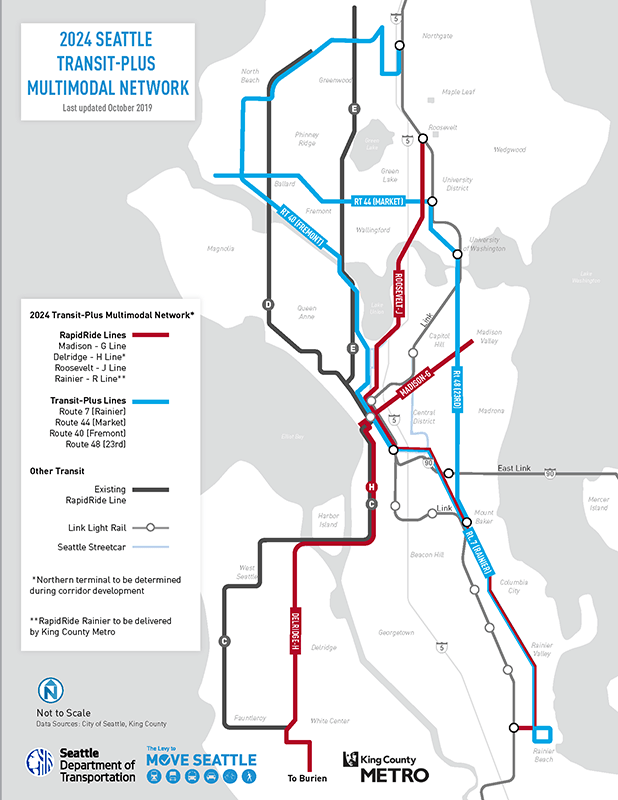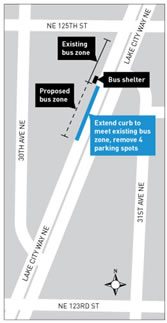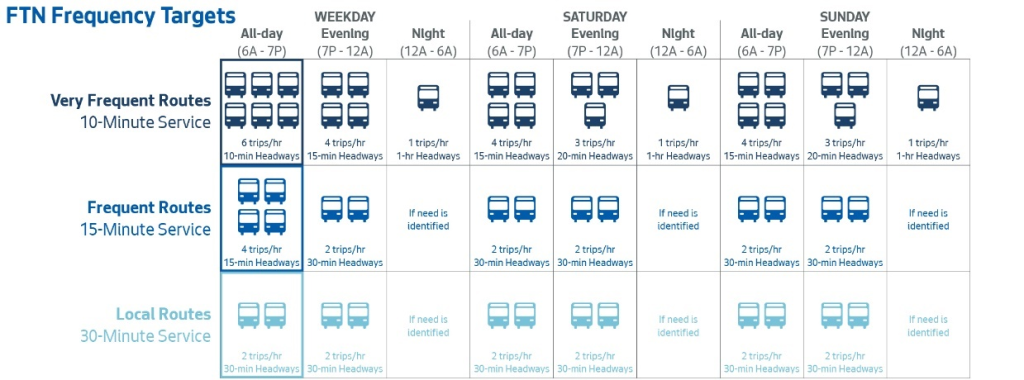Seattle Mayor Jenny Durkan presented a spending plan on Monday for the funds collected and held in reserve during I-976 litigation. The Mayor’s proposal would allocate $12.7 million to restore Covid-impacted projects paused last spring, $5 million to King County Metro for essential service, and $6 million set aside in a reserve for transit service. These one-time allotments were recommended with the help of Transit Advisory Board and Levy Oversight Committee to help identify projects to resume or restore considering the massive impacts of the pandemic.
Even before the pandemic and economic crisis, Seattle’s transportation budget was unnecessarily decimated by I-976 and our residents and businesses have felt the real impacts of cuts. Justice for Seattle voters prevailed when the Supreme Court struck down I-976, and now we are moving forward with a plan to invest these funds in improved transit service and projects that support a thriving and equitable Seattle. While it has been a brutal year for transit, our goal as a City is to emerge with robust transit options across the City, including new light rail and improvements to our bus service.
Mayor Jenny Durkan
To recap, had the I-976 initiative had gone into effect, it would have limited vehicle license fees at $30 (not including other certain fees), based vehicle excise taxes on the Kelly Blue Book, and repealed authorization for certain regional transit authorities, like Sound Transit, to impose new motor vehicle excise taxes. Legal challenges quickly arose on November 13, 2019 and a judge blocked it from taking effect shortly thereafter, pending the case’s conclusion. State, regional, and city projects were postponed during litigation. Eleven months later the Washington Supreme Court ruled it invalid, as it had violated the state’s single-subject rule and it had an inaccurate ballot title, allowing public bodies to safely dip into isolated funds.
So, where exactly would the funds go?
The largest fraction of the funds from the reserve will go to resuming and restoring pandemicimpacted transportation projects. They fall into three categories: Transit Plus Multimodal Corridor, Transit Spot Improvement, and Vision Zero programs.
The Transit Plus Multimodal Corridor Program is the beleaguered project that once promised seven RapidRide upgraded corridors in the 2015 Move Seattle Levy. Budget issues have reduced the program to three delayed or truncated RapidRide routes with the rest demoted to Transit-Plus lines for the time being. Funding in this proposal would restore staff and technical sources to support the program. It would also specifically fund Route 40 Transit-Plus improvements. As the Route 40 project approaches 30%, bus lanes, queue jumps, improved sidewalks, crosswalks, and accessible ramps and curbs have been identified as the most popular improvements. When The Urbanist last reported on the route, SDOT and King County Metro had presented some of its concept ideas for Metro’s third most popular route by pre-pandemic ridership.
The Transit Spot Improvement Program involves improving delays experienced or caused by buses due to inadequate transit infrastructure. Generally, funding will go to installing concrete bus zone improvements, bus lanes, and rear-door bus pads. The proposal does name Gilman Ave Bus Safety Improvements, Lake City Way NE and NE 125th St Bus Stop Improvements, and 15th Ave NW and NW Market St Signal Improvements. For the Lake City Way improvement, an extended bus zone south and extended curb will help prevent southbound buses from blocking off NE 125th St. So far for the 15th Ave NW improvement, bus lanes and removing a center turn lane will help reduce delay experienced northbound on the corridor.
The Zero Vision–zero traffic deaths and serious injuries–project funded by the Mayor’s suggestion is the 23rd Ave E Vision Zero Project that would enhance safety on 23rd/24th Ave E between E John St and E Roanoke St for Montlake and eastern Capitol Hill. It would fund a third phase of the project, which was paused at final design. The third phase will support 12 bus zone improvements, a signal upgrade at 23rd Ave S and E John St, and a number of other parts of the Vision Zero program.
The five million dollars for essential bus service will go to Metro to continue investment in Seattle’s Frequent Transit Network, and support routes that continue to experience high ridership through the pandemic. Pandemic era high traffic routes support essential workers and transit-dependent neighbors that are disproportionately Black, Indigenous, and people of color. The Frequent Transit Network focuses on frequent, all-day, and everyday service. An investment goal of the Seattle Transit Benefit District (STBD) is to increase the number of routes in Seattle that meets the frequent threshold.
The last six million dollars are being reserved in case of unanticipated events. The Mayor’s Office presents potential lower-than-projected revenues in the early years of the new STBD as an example for the need for a buffer. A desire to increase that strategic reserve is also mentioned.
Next steps
Councilmember Alex Pedersen referenced this bucket of funding in a council briefing yesterday and said that the Mayor’s proposal would be released quickly after the briefing. Pedersen mentioned that the Seattle City Council will likely discuss the spending $23.7 million plan in March, as was announced in the Mayor’s proposal. Pedersen also took an opportunity in the briefing to push back on a Jon Talton op-ed in The Seattle Times that calls the city council uninterested in the mass transit crisis. Pedersen insisted that the city council is passionate about transit. Councilmember Kshama Sawant later agreed with Pedersen on the city council’s passion for transit, but noted her disappointment in the city council’s past lack of support on raising the Amazon tax to fund transit.
The City’s proposal to spend previously withheld funds seems fair now that funding is secured and the economic situation is clearer amid the pandemic.
You can let your councilmembers know what you think of the Mayor’s proposal.
Shaun Kuo is a junior editor at The Urbanist and a recent graduate from the UW Tacoma Master of Arts in Community Planning. He is a urban planner at the Puget Sound Regional Council and a Seattle native that has lived in Wallingford, Northgate, and Lake Forest Park. He enjoys exploring the city by bus and foot.





